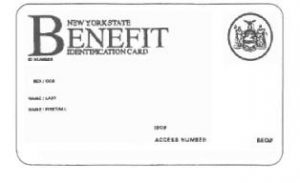Medicaid Qualifying Trust – How Does it Work
A Medicaid Qualifying Trust in NY allows you to qualify for Medicaid. You can have the government pay for medical care, home health aides, and nursing home. A Medicaid Qualifying Trust is a valuable tool that helps protect your assets, allowing you to leave your estate to your family.
What is a Medicaid Qualifying Trust in NY
When you make a Medicaid Qualifying Trust in NY, you leave your property with a person you trust, with legally binding instructions on how to manage the property. That person is called the trustee. Your trustee would usually be your close relative. People typically their child, niece or nephew or sibling.
You cannot be a trustee of your own Medicaid Qualifying Trust. Your spouse also cannot be a trustee of your Medicaid Qualifying Trust.
Your trustee has to follow the instructions you’ve written down in the trust agreement. The trustee also has to follow NY trustee law. The trustee cannot take property for themselves, although there can be another trustee to give property to that trustee.
Your degree of control over trust property will be limited – for example, you will not be able to dictate how the trustee will manage your property. However, you will still have some control over the assets. For example, you will be able to make non-binding suggestions to the trustee as to how to manage your property. And you will be able to change who benefits from your trust by using a power of appointment. As long as you are not the one benefitting from the trust, you can change the beneficiaries of your trust as much as you like.
If your income is over the Medicaid threshold limit, you will need to make two trusts before they can qualify for Medicaid. In addition to the Income Only Trust, which will be used for the principal and will probably be managed by your children if you are an older adult, you will also need to be a part of a pooled income trust for the income over the Medicaid threshold limit. Pooled trusts are managed by a non-profit organization. A pooled trust non-profit usually takes about 8.5 % in fees from the income that goes into the trust.
The first trust we talked about is called a Medicaid Asset Protection Trust, and the second trust, the one that avoids Medicaid spend-down, is called a Pooled Trust, or Community Spend-down Trust.
IRA, 401(k) and other qualified retirement accounts are not required to be a part of the Medicaid Qualifying Trust, as the Medicaid administration does not consider them to be assets. But the Medicaid administration will count any income and distributions from the retirement accounts towards the Medicaid income threshold.
A Medicaid Asset Protection Trust not only qualifies you for NY Medicaid but also has other benefits.
The Elements of a Medicaid Qualifying Trust
A valid Medicaid Qualifying Trust has
- a trust document, which sets forth the terms of the trust
- a grantor, who gives property to the trust
- a settlor, who sets up the trust
- a trustee, who manages the trust
- beneficiaries, who benefits from the trust
- property that’s transferred to the trust
A trust can have one or multiple trustees, grantors, settlors and beneficiaries. When you set up a Medicaid Qualifying Trust, you are a settlor because you set it up, a grantor because you transfer property to the trust, and a beneficiary of the income of the trust.
The Downsides to a Medicaid Qualifying Trust

A Medicaid Qualifying Trust has some downsides.
- You will lose a degree of control over your assets
- You will not be able to use the principal for your own benefit; you will only get the income
- If your income is over the Medicaid income threshold, then you not only need a Medicaid Asset Protection Trust, but you will also need to be a part of a pooled trust, run by a non-profit, which will charge you 8.5% of any income it processes
- If you are over the age of 55, your estate may be subject to estate recovery upon your death under some circumstances
- A Special Needs Trust made with the beneficiary’s own assets requires a provision to pay back Medicaid upon the beneficiary’s death
A Medicaid Qualifying Trust is right for you only if you want to get Medicaid and are willing to live with those trade-offs.
SSI, Section 8 and Food Stamp Benefits
When you set up Medicaid Qualifying Trust in NY, this same trust can also help you qualify for SSI (Supplemental Security Income), SNAP (Food Stamps) and Section 8 (Housing Choice Voucher Program) benefits. Because each one of those programs has different requirements, it is important to consider not only Medicaid but also those programs when setting up your trust. The trust that is right for you may be an “SSI, Section 8, SNAP and Medicaid Qualifying Trust.”
Restrictions on the Medicaid Qualifying Trust
Whatever money and property you place into a Medicaid Qualifying Trust, you give up a significant degree of control over those assets. You will not be able to use the principal. The trustee will only be allowed to give you the income. If the income is above the Medicaid threshold, you will have to spend down the excess income on medical care or have it have to go into a pooled trust managed by a nonprofit, which pays your bills for you and takes about 8.5% for their management fees.
 |
There may be a delay before you can use your Medicaid Qualifying Trust to qualify for nursing home Medicaid |
|---|
There are three kinds of Medicaid: “Regular,” “Home Care,” and “Nursing Home.” You can be eligible for “Regular” and “Home Care” right after creating a trust. But there is a five-year look-back period for qualifying for “Nursing Home” Medicaid. If you try to get “Nursing Home” Medicaid before the five-year waiting period is up, there will be a one month disqualification period for each $11,500 you put in the trust.
This is an important distinction:
| No nursing home = trust works to get Medicaid right away | Example: You put $100,000 into a trust; you will qualify for regular Medicaid the following month. |
|---|---|
| Nursing home = trust starts working with a delay | Example: You put $100,000 into a trust; you will only qualify you for Nursing Home Medicaid in about 9 months. |
Five-Year Look-Back – The nursing home Medicaid look-back period is limited to five years. So you can make a trust now and start receiving regular Medicaid. It’s possible that by the time you need a nursing home, you’d already be past the look-back period. Look at the following two examples to see how the five-year look-back works:
Alternatives to a Medicaid Qualifying Trust
There are alternatives – As we said, the catch with this trust is that you don’t have access to the principal and there’s a waiting period if you want Medicaid to pay for your nursing home. If the trade-off is too much for you, don’t despair. As you’ll see, there are other tools besides a Medicaid Qualifying Trust.
Special Needs Trust – If you have a disability and are under the age of 65, you may qualify for a Special Needs Trust, which qualifies you for Medicaid and SSI without losing access to the principal of the trust.
Spousal Refusal – If one spouse is sick, they can transfer all of their assets to the healthy spouse and have the healthy spouse sign a spousal refusal, which would qualify the sick spouse for Medicaid.
Other Tools – If you are “on nursing home steps”, look into forming a Medicaid annuity or doing a gift and loan. There are also qualified transfers.
Using a Medicaid Qualifying Trust as an Estate Planning Tool
Avoid Future Nursing Home Costs – If you don’t need Nursing Home Medicaid right away and are willing to wait five years until you can get nursing home Medicaid, you can use a Medicaid Qualifying Trust as a planning tool. As we get older, we begin to worry about the possibility that we may get sick and end up in a nursing home. Paying for a nursing home can drastically reduce a person’s savings. In NY, the average cost of nursing home care is a little more than $75,000 per year, with the better nursing home care costing upwards of $170,000 a year.
Most Americans will drain out their savings while paying for nursing home care until they qualify for Medicaid. But with proper planning, this unfortunate result can easily be avoided, and people can go to a nursing home and still leave some inheritance to their children.
If you no longer qualify for long-term care insurance, a Medicaid Qualifying Trust is a great way to secure your future eligibility for Medicaid. The keyword here is “future,” because a Medicaid Qualifying Trust will not qualify you for Medicaid immediately. There will be a penalty period, which can be up to five years but is often less. If you have an immediate need for Medicaid, there are several other techniques we can use, such as a gift and loan or a spousal refusal.
As a part of creating a Medicaid Qualifying Trust in NY, you will have to transfer your assets in the name of the trust, i.e., transfer your money and stocks to your trust’s account and re-title your property to the trust.
Peter creates a Medicaid Qualifying Trust. For it to work, he has to transfer most of his money and stock to an account belonging to “Doe Trust 0945” and deed his house to “Doe Trust 0945”. Titling the property to the trust ensures that the Medicaid administration will accept the premise that Peter no longer has the money in his possession.
Once assets are put into a Medicaid Qualifying Trust in NY, you can lose Medicaid if you terminate the trust. This limit on revoking or amending the trust is part of what makes the trust qualify you for Medicaid. Because you no longer own the property, you prevent Medicaid from asserting you don’t meet the Medicaid resource limit. The trustee of your choosing will manage the trust.
The trustee you pick should be a person who is very close to you and whom you trust completely, such as a son or daughter, niece, nephew, or a close friend. If you don’t have a person like that, you can hire an attorney or professional trustee to manage your trust.
You can have more than one trustee — for example, two children and an attorney or a banker.
Planning in advance is the key – A proper Medicaid Qualifying Trust which is more than five years old will qualify you for Medicaid bar none. A trust that existed for less than five years will incur a period of ineligibility for nursing home Medicaid. This is called the waiting period.
You can receive income from the trust, as long as the income is below the Medicaid eligibility limit. Medicaid will count the income, but “ignore” the principal of the trust. Your trustee would have to divert any income over the Medicaid limit to a pooled-income trust.
When Will I Begin to Qualify for Medicaid?
Delayed Effective Date – You will begin to qualify for regular Medicaid the month after you make the transfer of property into the trust. When the Medicaid Qualifying Trust is more than five (5) years old, you will qualify for Medicaid without a waiting period. Otherwise, the Medicaid administration calculates the period of ineligibility. They take the dollar value of the transfer and divide it by average monthly cost for nursing care (about $11,000 per month). The result would represent the number of months you will be ineligible for Medicaid.
No Delay if there’s a “Qualifying Relative” – You may be able to have a Medicaid Qualifying Trust without the imposition of a penalty period if you transfer your property to a qualifying relative. This could be :
- your spouse
- your child who is under 21, blind or permanently disabled
- your sibling if he or she has an equity interest in the house being transferred and was living there for at least one year before you went into nursing care, or
- an adult child who has lived in the home being transferred for at least 2 years preceding institutionalization and that child was taking care of you.
Speak to a Medicaid Lawyer – Speaking with an experienced Medicaid attorney will be useful to you. An attorney will advise you on how to use Medicaid to cover the cost of medical care without depleting your assets. If you are looking to get nursing home Medicaid, planning well in advance is a good option, because the penalty period will likely expire before you have the need to become institutionalized.
Non-Medicaid Advantages of a Medicaid Qualifying Trust
The main advantage of a Medicaid Qualifying Trust in NY is that it allows you to receive Medicaid as opposed to spending your funds on medical care. You gain the benefit of protecting your family’s assets and have the estate be passed down to your family. It also has the usual lifetime trust benefits:
- keeps assets out of the probate court
- maintains privacy
- avoids the hassle of multi-state probate proceedings
- avoids interruption of income and use of assets after your death
- provides planning for mental disability
- keeps money in the immediate family
- keeps money out of children’s divorces
- keeps money out of creditors’ reach
Here is more information about the benefits of trusts in general.
If you would like to find out more about how Medicaid Qualifying Trusts work in NY, you can call Albert Goodwin, Esq. at (212) 233-1233 or 212-233-1233.



